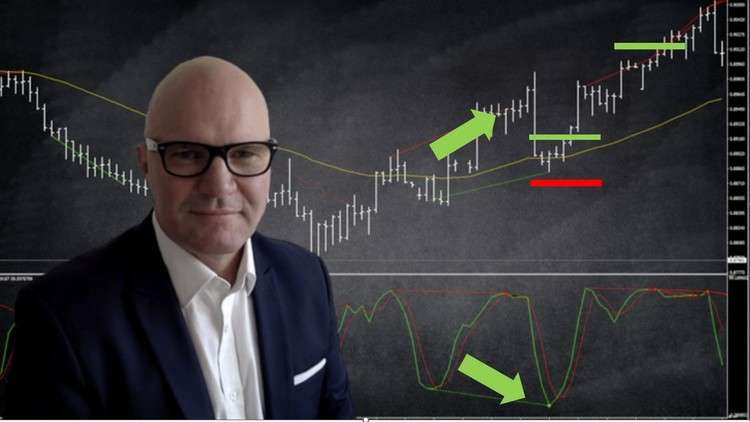
Trade the Stochastic Divergence for consistent profits. This course includes all MT4 indicators ready to download.
What you will learn
Master Stochastic Divergence forex trading as a Pro.
Read and understand price charts.
Create a trading plan.
Handle trading psychology.
Description
Trade the Stochastic Divergence like a pro. This course includes all MT4 indicators ready to download.
You will learn how to trade forex using the Stochastic Divergence strategy.
The Stochastic Divergence strategy is a popular approach used by forex traders to identify potential trend reversals in the market. It combines the use of the Stochastic Oscillator and divergence patterns to generate trade signals. Here’s a step-by-step guide on how to trade forex using the Stochastic Divergence strategy:
- Understand the Stochastic Oscillator: The Stochastic Oscillator is a momentum indicator that compares a forex pair’s closing price to its price range over a specified period. It consists of two lines: %K and %D. The %K line represents the current price in relation to the price range, while the %D line is a moving average of the %K line.
- Identify divergence patterns: Divergence occurs when the price of a forex pair moves in the opposite direction of the Stochastic Oscillator. There are two types of divergence: bullish divergence and bearish divergence. Bullish divergence forms when the price makes lower lows while the Stochastic Oscillator makes higher lows. Bearish divergence occurs when the price makes higher highs while the Stochastic Oscillator makes lower highs. Divergence patterns suggest a potential trend reversal.
- Confirm the divergence: Divergence alone is not a reliable signal. It’s crucial to confirm it with other technical indicators or price action signals. Look for additional confirmation such as candlestick patterns, trend lines, support/resistance levels, or other indicators like moving averages or RSI (Relative Strength Index).
- Enter the trade: Once you have identified a confirmed divergence pattern, determine the entry point for your trade. Traders often use different techniques for entering trades, such as waiting for a breakout of a trendline or a specific candlestick pattern. Some traders also wait for a retest of a broken trendline or a specific price level to enter the trade.
- Set your stop-loss and take-profit levels: To manage risk, it’s essential to set appropriate stop-loss and take-profit levels. A stop-loss order is placed below the entry point to limit potential losses if the trade goes against you. The take-profit order is set at a level where you expect the price to reach before reversing. It’s crucial to set these levels based on your risk tolerance, trading plan, and the specific characteristics of the forex pair you are trading.
- Monitor the trade and manage risk: Once the trade is initiated, it’s important to monitor it closely. You can adjust your stop-loss level as the trade progresses to protect your profits or limit your losses. Some traders also use trailing stops to lock in profits as the trade moves in their favor.
Remember that no trading strategy guarantees success, and it’s important to practice proper risk management, such as using appropriate position sizes and diversifying your trades. It’s also recommended to backtest the strategy on historical data and demo trade it before using it with real money. Additionally, staying updated with market news and developments can provide valuable insights to complement your technical analysis.
Content